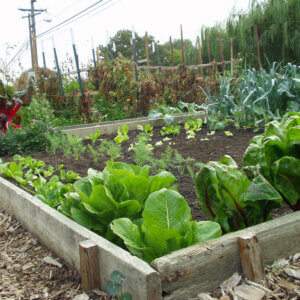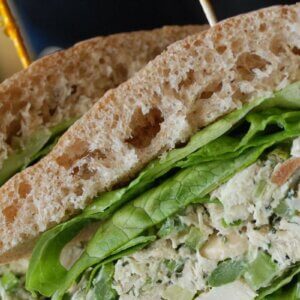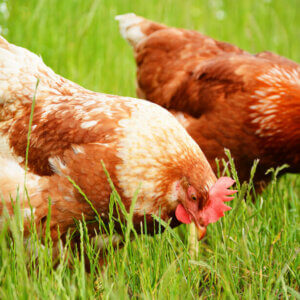Before I was interested in natural ways of healing, I had no problem reaching for the common OTC cough syrups, ointments, and multi-syllabic pills available at my local big box store. However, as I learned more about the side effects of synthetic additives, petroleum-based ointments, and hormone-disrupting chemicals, I started wondering about the safety and efficacy of these treatments.

My attention turned to natural, plant-based healing, and I was delighted to find that some very basic remedies were able to safely and effectively treat my day-to-day ailments with no side effects (and a far lower price tag).
Now that I’m living on a 12-acre homestead in the Ozarks, I have an even bigger opportunity to experiment with and learn about healing plants. With our active life, there are plenty of opportunities to try out basic herbal treatments on the constant array of bites and cuts it brings us.

Thus, I’ve been spending time researching and learning about safe, non-toxic plants that can be used to help my family heal from their common ailments without the need for synthetic chemicals.

Take a look in your backyard and see if any of these helpful “weeds” are out there, just waiting for you to use them!
Common Healing “Weeds”
Plantain (Plantago major) (Plantago lanceolata)
Though Broadleaf Plantain and English Plantain share a name with the banana-like fruit, they’re not related. This persistent resident of sidewalk cracks, scrubby land, and front yards is humble in stature, but hugely useful.

It’s nutrient-dense leaves, seeds, and roots are all edible. They also boast a list of healing properties such as being styptic, hemostatic, drawing, and healing for many wounds. Typically, the leaves are used for creating a salve.
Red Clover (Trifolium pratense)
A favorite of bees, livestock, and intrepid herbalists, this beautiful, common bloom is easily found in pastures, fields, and waste areas. The cheery blooms are full of minerals and vitamins, and have a long history of being used for skin problems.

Usually, you’ll want to collect the sweetly-delicious blooms. Do your best to only pick flowers that are bright pink or red–any that have turned brown have already lost their potency.
Self-Heal, Heal-All (Prunella vulgaris)
This promisingly named plant was a favorite of old-time herbalists, and also a common resident of waste places and fields.

A relative of the mint family, it is entirely edible. Now this plant is often sprayed as a lawn pest. When you harvest, focus on picking bright, purple blooms and full leaves.
Others
Other commonly-growing vulnerary (wound-healing) plants that may be growing in your backyard or garden are Mullein (Verbascum thapsus), Calendula (Calendula officinalis), Comfrey (Symphytum officinale), or Yarrow (Achillea millefolium). Take some time to explore your land and see what you’ve been blessed with! There may be a veritable apothecary out there, right under your nose.
A great way to use these common medicinal plants is in a salve. For the salve pictured, I used a mixture of plantain, self-heal, and red clover. The following instructions creates a simple, organic salve that would probably fetch a hefty price on a health-food store shelf!

Perfect for treating bites, scrapes, burns, and stings, this ointment is also entirely naturally-derived, so you can feel confident knowing that you will not be absorbing anything toxic through your skin–your biggest organ.
NOTE: As with any endeavor collecting wild plants, only collect from areas that have not been sprayed with pesticides or chemicals. Before collecting the plants, do your research to make sure you have identified them correctly. When in doubt, ask an expert or wait until you are sure, rather than assuming you’ve got the plant you hope it is.
How To Make A Healing Salve
1. Gather And Process Herbs
In the morning, before the day has heated up, gather a few large handfuls of some of the herbs described above.
Spread a bed sheet or towel out of direct sunlight and dry the herbs. The drying process may take a day or two. If you don’t have time to dry them completely, at least dry them to the point of being wilted.
2. Infuse With Oil
In glass jars (mason jars are great for this) pack the dried herbs, leaving about an inch of headspace at the top. Pour good-quality olive oil into the jar until it entirely covers the herbs, and seal the jars with a metal lid. Leave the jars in direct sunlight for 2-4 weeks, allowing them to steep and infuse.

Important note: Periodically check the jars for signs of condensation because it could lead to mold. If you notice moisture collecting throughout the day, loosen the jar lid to allow it to escape while you infuse the oils. If your oil smells bad or rancid, don’t use it. It’s safer to start over.
3. Strain The Infused Oil
After a few weeks of infusing, the oils should have taken on a slightly darker color and pleasant aroma. Using cheesecloth or a fine-mesh sieve, strain the amount of infused oil that you need for the recipe, and store the rest of the oil with the plants in the jar. Keep them in a dark, cool place, and they’ll be ready for your next recipe.
4. Blend With Beeswax
This is where it gets a little fun. Depending on how many different herbs you ended up infusing, you can create your very own healing blend!

For the one pictured here, I combined 1/2 cup of plantain oil with 1/4 cup red clover oil and 1/4 cup self-heal oil.

Over very low heat, preferably in a double boiler, combine your oils with 1/4 cup beeswax (if you’re making a big batch, add 1/4 cup of beeswax for every cup of infused oil) and heat slowly, stirring occasionally.
Once well combined, remove from heat and pour into a shallow glass jar or tin. Allow to cool and store in a dark, cool area until needed. Use as needed, as often as needed!
Do Your Research
I am not a doctor, nor do I claim to be one. I’m just a homesteader interested in taking responsibility for the health and healing of my family whenever I can.
I believe that with a little education and experience, most common maladies can be treated with a little bit of good food, rest, and an herb or two. As with any alternative remedy, don’t just take my word for it. Do your research and find out what is best for yourself and your family.
Resources
- Rosemary Gladstar’s Medicinal Herbs: A Beginner’s Guide, Rosemary Gladstar
- Mullein For Colds and Flu, Joybilee Farm
- Herb To Know: Self-Heal, Mother Earth Living









































Lovely! These directions are exactly what I needed. Thanks